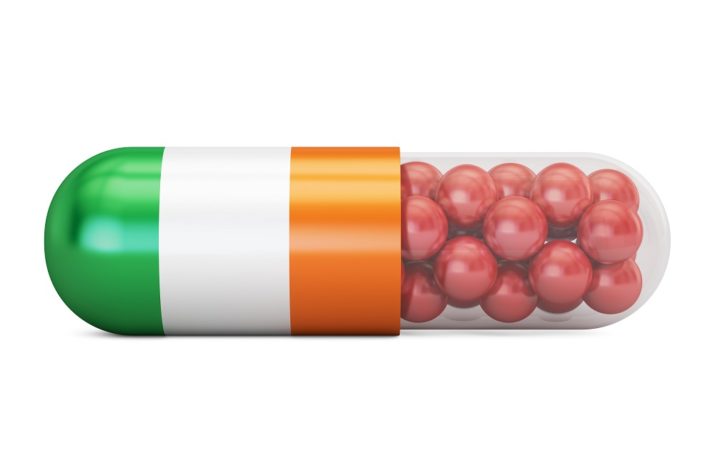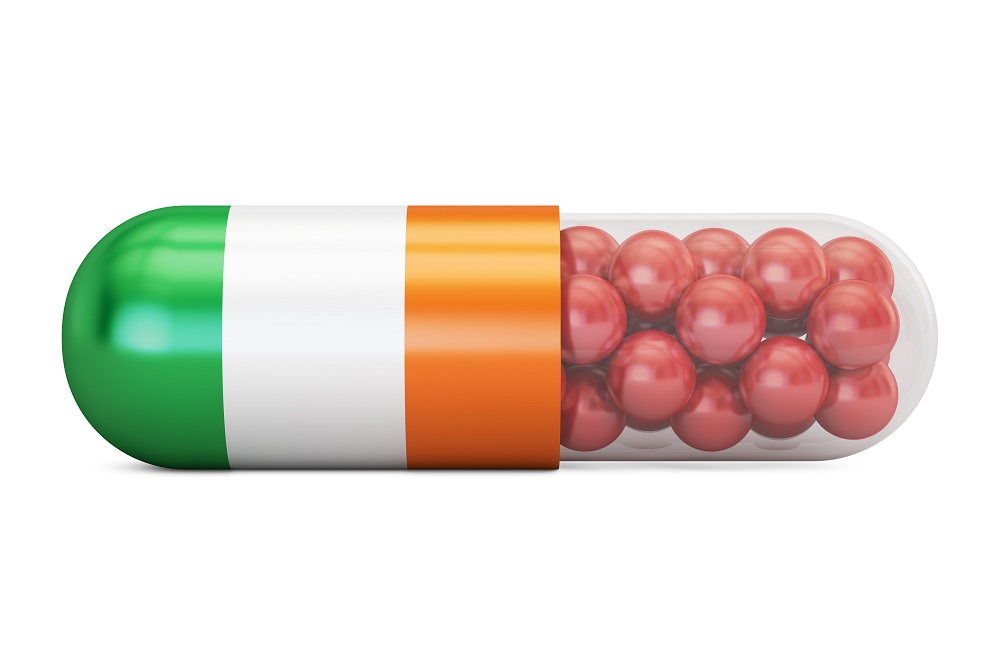

The perplexities of social inclusion
“We are losing the war on drugs in Ireland,” says Philly McMahon, star of GAA football Dublin. He is speaking at the launch for a period of public consultation on Ireland’s new National Drugs Strategy (NDS). The phrase rings harshly in my American ears, which can’t help hearing “war-on-drugs” as a caption for decades of incarceration and fractured communities. But as he continues, McMahon avoids the typical rhetoric of drug interdiction; instead, a confession: “I grew up trying to constantly hide my dirty secret – that of having a brother who was a drug addict.” Raised in Ballymun, one brother found sports, the other drugs. This rift effectively banished McMahon’s brother from the family. Set adrift, he died in London in drug-related-circumstances, far away and far too young. Philly’s voice breaks as he tells the story, and a wave of empathy washes over the audience. The shame at his brother is turned back on himself, and we are invited to collectively share it. His professed guilt becomes a call for understanding and inclusion: “when I should have showed him empathy, compassion and love, I turned the other way… We found it very difficult to know what to do, as we were not equipped to deal with this problem. And neither was Ireland.”
McMahon’s comments evoke a sense of both urgency and uncertainty – something must be done, but what can be done? He scales up this dual sense from the personal to the national. Indeed, this story reveals the current tensions in Ireland’s response to drug related issues, caught between supply and demand reduction on one hand, and harm reduction on the other. While Ireland moves towards a health approach, what constitutes health, personally and publicly, remains contested. For advocates of abstinence-oriented rehabilitation, recent proposals for decriminalization and the implementation of safe injection rooms generate anxieties over enabling and even normalizing substance abuse. Proponents of these measures counter that just-say-no attitudes perpetuate stigmatization and systemic exclusions. They seek to overcome such obstacles by appeals to social inclusion and human rights.
More generally, the specters of anti-social criminality and death by overdose, amplified by crisis-inflected media coverage, loom large in public discourse. In the face of the uncertainties and crises that proliferate around drugs, the language of social inclusion and human rights raises new perplexities. Does the inclusion of people who use drugs necessitate the exclusion of drug use, or can the right to one’s own body and life extend to consuming substances that potentially harm that body or end that life? On what grounds can the interests of people who use drugs be represented when this very act sets them outside a legitimate, recognizable social group?
The twin imperatives in McMahon’s speech – to both “show compassion, empathy, and love” and to “deal with this problem” – trace out a diffuse double bind. Showing compassion in this case carries an obligation of therapeutic response, but such interventions often entail an imposition if not outright violence against people involved with illicit substances. Posed in the abstract, no formal adjudication offers a satisfying solution to this dilemma. Yet, it is precisely this entanglement of care and coercion that Ireland’s outreach workers and service providers work out in their everyday interactions.[1] The work of harm reduction is not simply a means of ameliorating the worst consequences of drug use – it models an ethical and practical stance on which to approach these impasses. In doing so, it performs a mode of social inclusion that enacts a politics of acknowledgment.[2]
From crisis to (chemical) chaos
Catherine Byrne, TD Minister charged with overseeing the new NDS, motivated the public consultation period as a means to hear voices from all sectors.[3] She added: “Like it or not, drugs are unfortunately a fact of life here in Ireland.” It is a common refrain, though spoken in very different registers. In this case, it signals the pragmatic realization of an unacceptable situation, a perpetual crisis that demands action. Historically, a sense of crisis has played a determinative role in the construction of Irish drug policy.[4] More recently, media attention has brought myriad new drugs-related crises into the public eye: a family feud that has offered spectacular displays of violence, increases in overdose, drug litter in public spaces, and an “epidemic” of poly-substance abuse.
Regarding this epidemic, an Irish Times article cited emergency room physician Chris Luke: “Unfortunately, the nature of drug use is that with globalisation and the internet, we are now seeing a complexity and diversity that is absolutely unprecedented.”[5] Benzos, z-drugs, molly, and snow-blow – diverted pharmaceuticals and designer stimulants now circulate alongside “traditional” narcotics. Luke diagnoses the situation as chemical chaos, a “bewildering menu of new and old drugs” available to a demographically shifting set of consumers. In particular, the article notes the synthetic opioid fentanyl, a bugbear of recent panics about increases in overdose-deaths around the globe. But as Luke notes, the drug itself is hardly new: “Doctors have been prescribing artificial drugs like fentanyl for years, but it’s become a huge problem as a substitute for heroin, which is the more natural, organic stuff.”[6]
The more natural, organic stuff – an unlikely slogan for a substance long considered the paragon of toxicity, a metonym for addiction itself. The apparent irony underscores the conceptual disarray posed by this expanding pharmacopeia. Moving across hidden channels and consumed in novel combinations, substances of dubious origin and purity become wholly unpredictable in their effects. At the limits of uncertainty, they ostensibly assume an unforeseeable power to wreak havoc. Accordingly, a Herald article warned of the “over 100 ‘highly visible’ chaotic drug users,” whose “stumbling walk and spaced-out look has led many members of the public to refer to these addicts as ‘The Walking Dead.'”[7] Chemical chaos thus redounds upon the consumers. The full page panel includes a report of a man stopped by Gardaí for attempting to ride off on a stolen bicycle while it was still locked to a railing. Per a passing witness: “The man was clearly under the influence of drugs. He didn’t seem to see anyone as he was trying to pedal away.” The author thus concludes: “The incident in the city center was yet another example of the scourge of illegal drugs in Dublin and its harmful effects.” The most harmful, it seems, is the oblivion of these zombies, moving inside the city yet completely outside its system of rationality: mutual social awareness and the (physical and symbolic) markers of private property.
The article also featured an itemized list of available drugs, their effects and street prices: benzos “as little as €2 each,” snow-blow for “€10-15 per sachet,” and crack cocaine at “€50 per dose.” Reading like a menu, the list strikingly parallels the adjacent advertisement for Lidl’s Wine, Steak & Cheese Event (Côte du Rhône, €9.99; Fresh Irish T-Bone €8.99). This pricing scheme elicited considerable laughter from some of my interlocutors – they suggested we write the editors, who were clearly paying too much for their drugs. Yet reporting cost-in-Euros is a typical element of media coverage, particularly in the genre of seizure reports.
The assignment of a relatively stable, quantifiable value gives the impression of drugs as an everyday commodity. But the chaotic effects of rogue chemicals and their extension to the moral quality of consumers belie this normality. This lamination of monetary and moral value centers attention on drug use as the core of the problem and the target for interventions. Easily available but uncontrollably dangerous, the only response to this intractable menace seems to be containing the uncontainable. This reflects “the radical presentism of crisis talk,” the manner in which it frames a complex issue as an immediate problem with a definitive but unachievable solution.[8] In this modality, crisis undermines any project that seeks alternatives to supply and demand reduction.
But while crisis may constrain action, it also provides moments of public attention that afford an opening for groups committed to harm reduction policies. An interlocutor at CityWide Drugs Crisis Campaign put it succinctly: “It’s always crisis that moves the political will.” But it requires interested actors to move it in the right direction. Indeed, decriminalization and medically supervised injection centers were politically unthinkable even four years ago. Groups like CityWide and the Ana Liffey Drug Project, working with key politicians, pushed forward these policies with surprising rapidity. They built this forward momentum by reworking the pragmatics of crisis talk, that is, by redirecting public anxieties. For instance, advocates utilized growing concern over public injecting and discarded syringes to highlight the need for safe injection spaces, with notable success: in response to a media exposé on drugs dens in St. Stephens Green, Dublin Mayor Brendan Carr called for the immediate opening of safe injection centers.
In a therapeutic context, harm reduction practices resist localizing problems in favor of an “ecological sensibility” through which “they abandon the fantasy of finding final solutions to stable problems.”[9] That is, unpredictable and changing circumstances require practitioners to set aside the notion of a therapeutic trajectory as a linear process of achieving a given end. This ability to shift attention constitutes a form of political action. Its implications come to light in the work of the Union for Improved Services, Communication, and Education (UISCE), which serves as a representative body for persons who use drugs and related services.[10]
On my first day with UISCE, the coordinator Hannah presented the kit prepared for the HSE’s Naloxone Demonstration Project.[11] It consists of a large pre-filled syringe encased in a long yellow box, too large to carry in one’s socks or bra. Aside from this impracticality, she offers me a thought experiment: imagine a mum coming home to find the house a mess and her kid goofing off [injecting heroin] – she’s livid, she wants to do something, and she’s gonna look at this. The implication sinks in as I examine the kit – what looked like a life-saving medical device now appears as a potential weapon. She isn’t suggesting that the naloxone prescription program be abandoned; such a yes-or-no determination answers precisely the wrong question. Rather, her act of reframing invites me to consider other possibilities, such as nasal preparations. It provides a small but incisive example of a different kind of representation – beyond simply speaking on a groups’ behalf, it demands active participation in posing the questions.
Nevertheless, this mode of social inclusion smacks against moral imaginaries, which exclude persons who use drugs from the categories of social, even human beings. Moreover, the legalistic register of human rights discourse makes its principles illegible and thus unspeakable for many. To this end, UISCE developed a poster to translate human rights principles developed by the Irish Council of Civil Liberties into concrete utterances. Discussing the project one evening, we come to the item:
Right to private life, freedom of thought, expression, association (cf. Arts 8, 9, 10, 11 …) Referring to the right to private life, ICCL suggests this right arguably extends to enjoying an experience of one’s choice, including those that alter one’s mental perceptions or state of consciousness, especially if it does not transcend to the public or endanger others.
Hannah makes a suggestion: “it’s my feckin’ body and I can do what I like.” As we mull it over, John raises the obvious objection: “yeah, but what if they’re going to kill themselves?” Hannah responds that we still have to respect personal autonomy, and cites the principles for applying involuntary restraint in cases of Prader-Willi syndrome. But it happens all the same: we are trapped in the space of the impossible ethical dilemma, where care and violence are inextricably intertwined.
Not for old bones
This constant challenge comes up again in speaking with Gary, the director of an addiction-focused community program for women. The program attempts to balance harm reduction with the goal of recovery – to encourage use reduction without judgment, to accept drug use without ignoring its real harms. To illustrate the approach, Gary shows me a series of cards featuring the character Rita (an acronym for Reducing Harm throughout Recovery). Each begins with the header Rita Says… followed by a smiling figuring posing questions or advice with closed eyes: Are you able for that much?; If you’re swapping from one thing to another, who are you kidding?; Why not try just what the doctor ordered? The statements are somewhat cryptic by design. Often used as group discussion starters, they carry a specific message but allow for discursive exploration to arrive at it. Images on the cards occasionally motivate their meaning, sometimes in different directions. Compare, for example, There’s no such thing as a one hit wonder followed by bright pink star or again with a fist. But despite their referential ambiguity, every card concludes the same way: you know what I mean!
From a critical standpoint, the Rita Says… series might be read as paternalistic, with a juxtaposition of gendering: the Irish Mammy correcting the willful child. The capping line reinforces this effect – don’t even try to deny it, you know what I mean. Yet the maternal figure also intimates care and nurturance. This condensation holds together the antinomy of the directed aim of therapy and the willingness to defer it in the name of unconditional support.
To elaborate, Gary mentioned a client who had gone from sleeping rough in the park, drinking 18 cans on top of methadone. Now she lives in a day-to-day hostel, drinking only four cans. In this sense she has reduced her harm. “But if you saw her yesterday, you might not think so, and she was not doing well that day. But she came in. And she’s coming in every day. And this is recovery.” He recounts how she had been taking snow-blow with a friend at the hostel. She could tell he wasn’t responding properly, that he needed to go to the hospital, but that she’d be alright: “She knows her body, and she knew she could sleep it off, eat some breakfast, and come in the next day.” I pick up on his phrase, and remark on how many fail to recognize the knowledge people who use drugs often have of their specific effects on their body. He responds: “So she knows her own body, until of course the day she doesn’t.” As I contemplate his statement, he goes on:
“We have an expression here – she’s not for old bones. And this woman, she’s not for old bones. She’s not going to make it to 65. Maybe she will make it, but then her life will probably look very different. Her life, maybe that will end, and that’s okay. Because it’s her life, and her choice.”
At face value, these words might be read as an expression of futility. Instead, I propose that they reveal an embrace of uncertainty, and thus express a different futurity.
Many theories of addiction, particularly the model of a chronic relapsing brain disease, frame it as behavioral repetitions inexorably progressing toward physical and social dissolution. Tellingly, efforts aimed solely at eliminating the drugs problem recapitulate this foreclosed future, facilitated by crisis talk which propels a recommitment to policies and programs that generate the conditions for such crises. To recognize people who use drugs in this way reduces their participation to a matter of compliance to a predetermined course of action. This exclusion is surely political as well as therapeutic. In contrast, Gary’s seemingly unstable footing serves as a foundation for enacting a politics of acknowledgment, foremost of “one’s practical limits in the face of an unpredictable and contingent future.”[12] This acknowledgement opens the future to the different possibilities of the present, but more importantly, it admits the client into a shared construction of that future. And so that expression lingers: not for old bones. As Gary uttered these words, I heard no cynicism, no resignation – rather, concern and availability coupled with a radical acceptance. It is difficult to disentangle, more difficult to articulate. But in a vague sort of way, I know what he means.
Kieran Kelley is a PhD student in the Department of Anthropology at the University of Chicago. His dissertation research, Living with Drugs in the Republic, examines the experimental and epistemic practices of persons using drugs in Dublin, Ireland, and their consequent participation in projects of knowledge production and political representation. His theoretical interests include: drug use and addiction; the circulation, translation, and scaling of communicative economies; and attention and habit as socially embedded, semiotically mediated processes.
Photo: Pill capsule with Ireland flag | Shutterstock
References:
Brodwin, Paul. “The Ethics of Ambivalence and the Practice of Constraint in US Psychiatry.” Culture, Medicine, and Psychiatry. 38 no.4 (2014): 527-549.
Carr, E. Summerson. “Occupation Bedbugs: Or, the Urgency and Agency of Professional Pragmatism.” Cultural Anthropology 30 no.2 (2015): 257-285.
Gleeson, Colin “Diversity of drugs market unprecedented, says Dr Chris Luke.” Irish Times July 31, 2016. <http://www.irishtimes.com/news/health/diversity-of-drugs-market-unprecedented-says-dr-chris-luke-1.2741031>
Lynch, Kathleen, Sara Cantillon, and Margaret Crean. “Inequality” in Austerity and Recovery in Ireland. ed. William K Roche, Philip J. O’Connell, and Andrea Prothero. Oxford: Oxford University Press, 2016.
Markell, Patchen. Bound by Recognition. Princeton: Princeton University Press, 2003.
Masco, Joseph. “The Crisis in Crisis.”Current Anthropology 58 sp. 15 (2017): S65-S76.
O’Keefe, Alan. “The Dangerous Drugs Abused by City’s 100 ‘Walking Dead’.” The Herald14 September 2016.
[1]cf. Brodwin (2014)
[2]cf. Markell (2003)
[3]The call to hear from all voices reflects an ideal of social inclusion that figures prominently in Irish politics. Services for Addiction, Homelessness, HIV/AIDS, LGBTQ and Traveller’s Rights fall under the aegisof the National Office for Social Inclusion of the Health Services Executive (HSE). Critics contend that in practice this “ideology of consensualism” reinforces a center-right status quo and thereby excludes politically and socially marginal voices (Lynch et al 2016).
[4]The arrival of heroin and HIV in the 1980s initially prompted little government response, giving rise to what many call Ireland’s “community approach.” Community activism consisted of “pushers out” campaigns, public marches and neighborhood policing, and voluntary sector rehabilitation programs. In the late 1990s the retaliatory murder of crime journalist Veronica Guerin by a drug gang served as a catalyst for numerous government initiatives, including the development of Local and Regional Drug Task Forces and the drafting of the 1998 Methadone Protocol. Networking and funding of heterodox programs flourished during the Celtic Tiger economy of the 2000s. Following the 2008 collapse, government divestment has led to competition for funding and a corresponding entrenchment of therapeutic and ideological commitments.
[5]Gleeson (2016)
[6]ibid.
[7]O’Keefe (2016)
[8]Masco (2017: S73)
[9]Carr (2015: 271)
[10]It should be noted that UISCE’s peer-led outreach team consists of people actively using the services.
[11]Naloxone is an opioid antagonist that can reverse the effects of an overdose.
[12]Markell (2003: 38)
Published on February 1, 2017.




